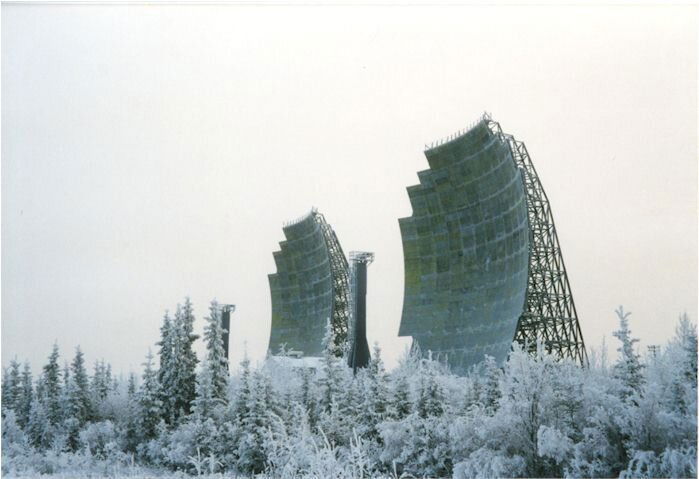A few of the channels I receive (21.1 from Long Island, NY and 25.1 from NYC) always seem to have a stronger signal in the mornings. These are two of the more distant channels I can receive here in NJ. Anyone have similar experiences with fringe area channels?
Some TV Channels Come In Better in the Mornings
- Thread starter spongella
- Start date
- Latest activity Latest activity:
- Replies 22
- Views 3K
You are using an out of date browser. It may not display this or other websites correctly.
You should upgrade or use an alternative browser.
You should upgrade or use an alternative browser.
A few of the channels I receive (21.1 from Long Island, NY and 25.1 from NYC) always seem to have a stronger signal in the mornings. These are two of the more distant channels I can receive here in NJ. Anyone have similar experiences with fringe area channels?
Yes. Also late evenings (9-Midnight).
In the morning there is a slight "push" by the solar wind that "blows" these signals toward you, then during the day the same solar radiation drowns out weakest signals.
In the morning there is a slight "push" by the solar wind that "blows" these signals toward you, then during the day the same solar radiation drowns out weakest signals.
Huh? I thought it was bounce off the ionosphere. At night, the ionosphere is at a higher altitude.
Not sure about that. Pretty good explanation here.Huh? I thought it was bounce off the ionosphere. At night, the ionosphere is at a higher altitude.

Tropospheric propagation - Wikipedia
Not sure about that. Pretty good explanation here.
Maybe. I was thinking of low-angle skywaves: Skywave - Wikipedia. Do we have any TV engineers who can explain why you can receive more distant stations at night, than you can in the daytime?
Do we have any TV engineers who can explain why you can receive more distant stations at night, than you can in the daytime?
Not an engineer, but I do know that tropospheric ducting can cause very distant stations to come in, and that can happen during the day also. However, I'm not sure if ducting causes nearby stations to come in better at night.
Ducting can also cause distant FM stations to bounce and come in sometimes. Back in the 90's while living in Ohio, I can remember stations from Corpus Christi coming in on my FM dial more than once. 1346 miles.
The antennas in my avatar are Tropo reflectors, 120 feet tall. They were part of Alaska's cold war military communications network but they used the "brute force" method for reliable point to point comms up to 250 miles or so, the longer shots used 50 Kw. Off topic but really interesting technology. It was made obsolete with the first satellite systems.
I do know that tropospheric ducting can cause very distant stations to come in
How do you know it was trophospheric ducting rather than skywaves?
The antennas in my avatar are Tropo reflectors, 120 feet tall.
Your avatar is too small for my old man eyes. Can you post a bigger picture of those 120ft antennas?
How do you know it was trophospheric ducting rather than skywaves?
Well certainly I can't say for sure.
Here is an interesting site that maps the potential for ducting events based on region:
http://www.dxinfocentre.com/tropo.html
Sure, they were located in Fort Yukon, Alaska I took them around 1990 before they were demolished. If you want to read more about the technology look up "White Alice Communications System. They used frequencies around 900 Mhz.
Attachments
Last edited:
Here is an interesting site that maps the potential for ducting events based on region:
http://www.dxinfocentre.com/tropo.html
This shows my state (VA) with no signal!
This shows my state (VA) with no signal!
No, I think it means no tropo activity
Skyways, conduction are ionosphere's layer are F2 and E are for low bands freqs, going from 0 KHz up max 88 MHz +.
Troops, ducting can start at 50 MHz up to 12 GHz +.
OK, that being the case, I think this means that my favorite ionosphere skipping skywave claim is only going to happen for low VHF. So, for all the TV chnanels we have around here, this should properly be called tropospheric ducting.
No, I think it means no tropo activity
I'm still having trouble understanding the colors on that chart. VA is all black, which is "nil". If that means "no noise", then we're good. If that means "no ducting", then that's bad.
Red and purple means Tropo ducting is hot!
You guys! Is "hot" good? I think so. In that case, no DXing for me right now since VA is "nill".
Similar threads
- Replies
- 3
- Views
- 301
- Replies
- 6
- Views
- 900
- Replies
- 0
- Views
- 157
- Replies
- 11
- Views
- 859


